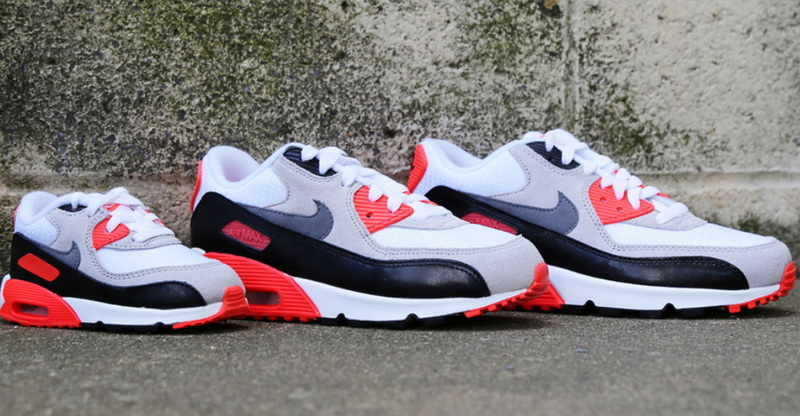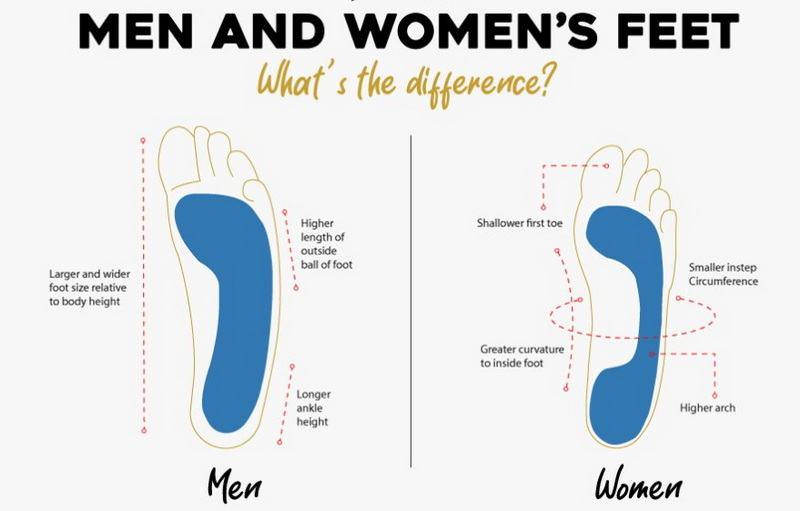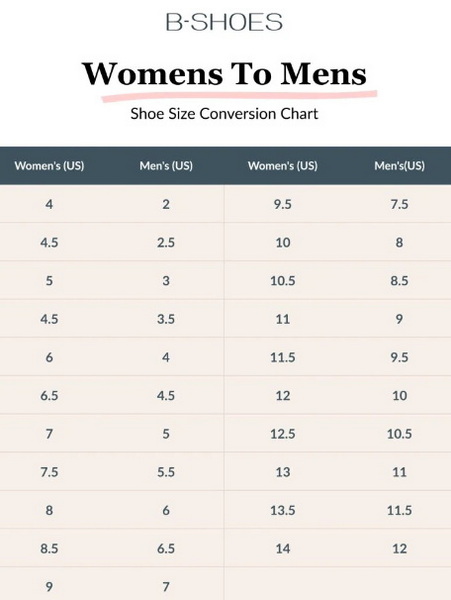Content Menu
● Introduction
● Anatomical Differences
>> Foot Shape and Size
>> Arch Height
>> Q-Angle
● Sizing Differences
>> Numerical Sizing
>> Width Variations
>> Conversion Chart
● Design and Style Differences
>> Color Palette
>> Heel Height and Types
>> Toe Shape
● Material and Construction Differences
>> Upper Materials
>> Sole Construction
>> Support Structures
● Athletic Shoe Differences
>> Running Shoes
>> Basketball Shoes
>> Soccer Cleats
● Comfort and Fit Considerations
>> Cushioning
>> Flexibility
>> Heel Counter
● Specialized Footwear Differences
>> Work Boots
>> Dress Shoes
>> Dance Shoes
● The Future of Gendered Footwear
>> Unisex Designs
>> Customization
>> Inclusive Sizing
● Conclusion
● FAQ
>> 1. Can women wear men's shoes and vice versa?
>> 2. Are there significant differences in athletic shoes for men and women?
>> 3. How do the materials differ between men's and women's shoes?
>> 4. Are there differences in comfort features between men's and women's shoes?
>> 5. How is the shoe industry addressing gender differences in footwear?
● Citations:
Introduction
When it comes to footwear, the differences between men's and women's shoes extend far beyond mere aesthetics. From sizing and fit to design elements and functionality, understanding these distinctions is crucial for both consumers and manufacturers. This comprehensive guide will delve into the key differences between men's and women's shoes, exploring various aspects such as anatomy, sizing, materials, and style preferences.

Anatomical Differences
The fundamental differences between men's and women's shoes stem from the anatomical variations in their feet. These biological distinctions play a significant role in shoe design and construction.
Foot Shape and Size
Men typically have longer and wider feet compared to women of the same height. This results in men's shoes generally being broader and longer for the same numerical size[1]. Women's feet, on the other hand, tend to have a more triangular shape, with a wider forefoot and narrower heel[1].
Arch Height
Women often have higher arches than men, which influences the level of arch support required in their shoes. This anatomical difference can affect the overall comfort and fit of the footwear[1].
Q-Angle
The Q-angle, or quadriceps angle, is the angle between the quad muscle and the kneecap. Women generally have wider hips, resulting in a larger Q-angle. This difference impacts how the foot strikes the ground during walking or running, necessitating specific design considerations in women's shoes[1].
Sizing Differences
One of the most noticeable differences between men's and women's shoes lies in their sizing systems.
Numerical Sizing
Men's shoes typically run about 1.5 sizes larger than women's shoes. For example, a women's size 8 is roughly equivalent to a men's size 6.5[2]. This difference is crucial to remember when considering purchasing shoes designed for the opposite gender.
Width Variations
Men's shoes are generally wider than women's shoes in the same size. Standard width for men's shoes is often "D," while for women, it's "B"[3]. However, it's important to note that width can vary among brands and specific models.
Conversion Chart
Here's a simple conversion chart to help navigate between men's and women's shoe sizes:
| Women's Size | Men's Size |
| 6 | 4.5 |
| 7 | 5.5 |
| 8 | 6.5 |
| 9 | 7.5 |
| 10 | 8.5 |
Design and Style Differences
While functionality is paramount, style plays a significant role in distinguishing men's and women's shoes.
Color Palette
Women's shoes often feature a broader range of colors, including pastels and bright hues. Men's shoes, on the other hand, tend to stick to more neutral and darker tones[1].
Heel Height and Types
Women's shoes offer a greater variety of heel heights and types, from flats to stilettos. Men's shoes typically have lower, more uniform heel heights, with exceptions in certain formal or specialized footwear[6].
Toe Shape
Women's shoes often have more varied toe shapes, including pointed, round, and square. Men's shoes generally feature broader, more rounded toe boxes[6].
Variety of women's shoe styles
Material and Construction Differences
The materials used and construction techniques employed can vary between men's and women's shoes.
Upper Materials
While both genders' shoes use a wide range of materials, women's shoes often incorporate softer, more flexible materials to accommodate the typically more delicate foot structure[6].
Sole Construction
Men's shoes often feature thicker, more durable soles due to the higher average body weight and potential for more strenuous activities. Women's shoes may have more flexible soles to allow for a greater range of motion[6].
Support Structures
Women's shoes, especially athletic models, may include additional support structures to accommodate the wider Q-angle and potential for overpronation[1].

Athletic Shoe Differences
In the realm of athletic footwear, the differences between men's and women's shoes become even more pronounced.
Running Shoes
Running shoes for women often have a more flexible forefoot and extra support in the midsole to accommodate the higher arches and potential for overpronation. Men's running shoes typically offer more stability and cushioning to support higher body weights[1].
Basketball Shoes
Men's basketball shoes are generally designed with more ankle support and durability, while women's versions may focus on lighter weight and flexibility[3].
Soccer Cleats
Soccer cleats for men and women may differ in stud pattern and cleat length to accommodate differences in playing style and field conditions[3].
Comfort and Fit Considerations
Achieving optimal comfort and fit is crucial for both men's and women's shoes, but the approach may differ.
Cushioning
Women's shoes often incorporate softer cushioning materials to accommodate lower body weights and provide enhanced comfort. Men's shoes may use denser cushioning to support higher impact forces[6].
Flexibility
Women's shoes typically offer more flexibility in the forefoot area to allow for a greater range of motion. Men's shoes may prioritize stability over flexibility[1].
Heel Counter
The heel counter in women's shoes is often narrower and more contoured to prevent slippage, while men's shoes may have a broader, more robust heel counter[1].
Specialized Footwear Differences
Certain types of footwear highlight the distinctions between men's and women's shoes more prominently.
Work Boots
Men's work boots often prioritize durability and protection, with thicker materials and reinforced toe caps. Women's work boots may offer similar protection while incorporating design elements that accommodate the female foot shape[6].
Dress Shoes
Formal footwear showcases significant differences, with women's dress shoes offering a wide range of heel heights and styles. Men's dress shoes typically maintain a more uniform appearance with subtle variations in design[6].
Dance Shoes
Dance shoes for men and women differ in heel height, flexibility, and overall design to accommodate different dance styles and traditional gender roles in partner dancing[6].
The Future of Gendered Footwear
As society evolves, so does the approach to gendered products, including shoes.
Unisex Designs
Many brands are now offering unisex or gender-neutral shoe designs that cater to a broader range of foot shapes and style preferences[3].
Customization
Advancements in technology are allowing for more personalized shoe-fitting experiences, potentially reducing the need for strict gender-based categorizations[1].
Inclusive Sizing
Some companies are expanding their size ranges to accommodate a wider variety of foot shapes and sizes, blurring the lines between traditional men's and women's sizing[2].
Conclusion
The differences between men's and women's shoes are multifaceted, encompassing aspects of anatomy, sizing, design, materials, and functionality. While these distinctions serve important purposes in providing comfortable and appropriate footwear for each gender, the industry is evolving to become more inclusive and personalized. Understanding these differences can help consumers make informed decisions when purchasing shoes, ensuring the best fit, comfort, and style for their individual needs.

FAQ
1. Can women wear men's shoes and vice versa?
Yes, women can wear men's shoes and vice versa, but it's important to consider the sizing differences. Women typically need to go down 1.5 sizes when buying men's shoes, while men would need to go up 1.5 sizes for women's shoes. However, the fit may not be ideal due to differences in width and overall shape[2].
2. Are there significant differences in athletic shoes for men and women?
Yes, athletic shoes for men and women often have distinct features. Women's athletic shoes typically have more flexible forefoots, extra midsole support, and designs that accommodate a wider Q-angle. Men's athletic shoes generally offer more stability and cushioning to support higher body weights[1].
3. How do the materials differ between men's and women's shoes?
While both use a variety of materials, women's shoes often incorporate softer, more flexible materials to accommodate the typically more delicate foot structure. Men's shoes may use more durable materials, especially in the soles, to withstand higher impact forces[6].
4. Are there differences in comfort features between men's and women's shoes?
Yes, women's shoes often have softer cushioning and more flexibility in the forefoot area. They may also have narrower, more contoured heel counters to prevent slippage. Men's shoes typically prioritize stability and may have denser cushioning to support higher body weights[1][6].
5. How is the shoe industry addressing gender differences in footwear?
The industry is evolving by offering more unisex designs, expanding size ranges, and exploring customization options. Some brands are moving towards gender-neutral collections that cater to a broader range of foot shapes and style preferences, potentially reducing the need for strict gender-based categorizations[1][2][3].
Citations:
[1] https://www.athleticshoereview.com/differences-between-mens-and-womens-shoes.html
[2] https://www.chums.co.uk/blog/is-there-a-difference-between-mens-and-womens-shoes
[3] https://www.reddit.com/r/RunningShoeGeeks/comments/10b8tfc/is_width_the_only_difference_between_then_mens/
[4] https://www.freepik.com/free-photos-vectors/men-women-shoes
[5] https://www.youtube.com/watch?v=A3-D4qYFaKs
[6] https://bootworld.com/blogs/advantage/the-difference-between-mens-and-womens-work-shoes
[7] https://www.lakhanifootwear.com/blog/major-differences-between-shoes-for-men-and-women-how-to-choose.html
[8] https://www.outsole.nl/blogs/the-differences-between-mens-and-womens-sneakers/
[9] https://www.youtube.com/watch?v=nkjXYkie9Lw
[10] https://www.poizon.com/article/difference-between-men-and-women-shoes

















